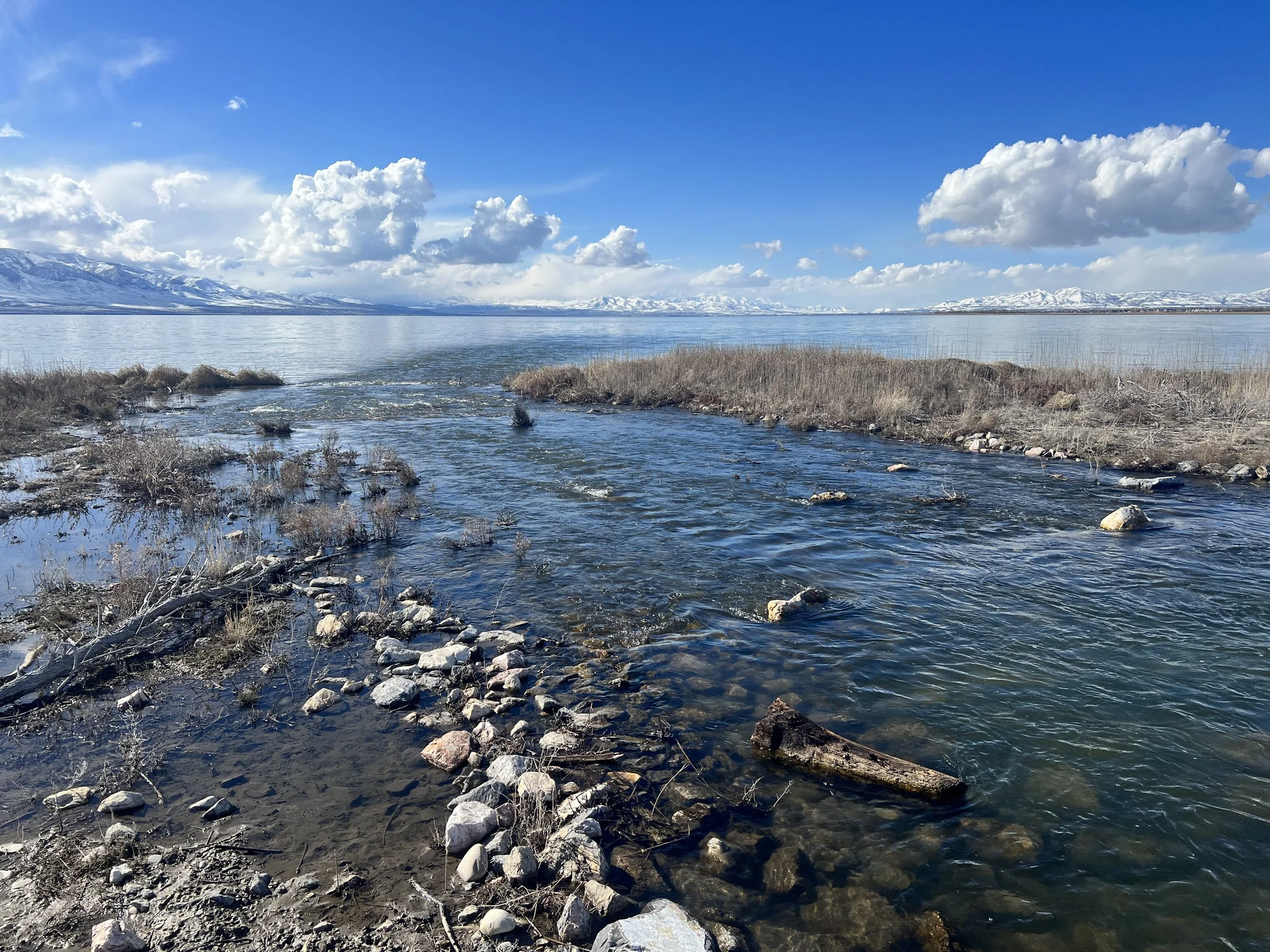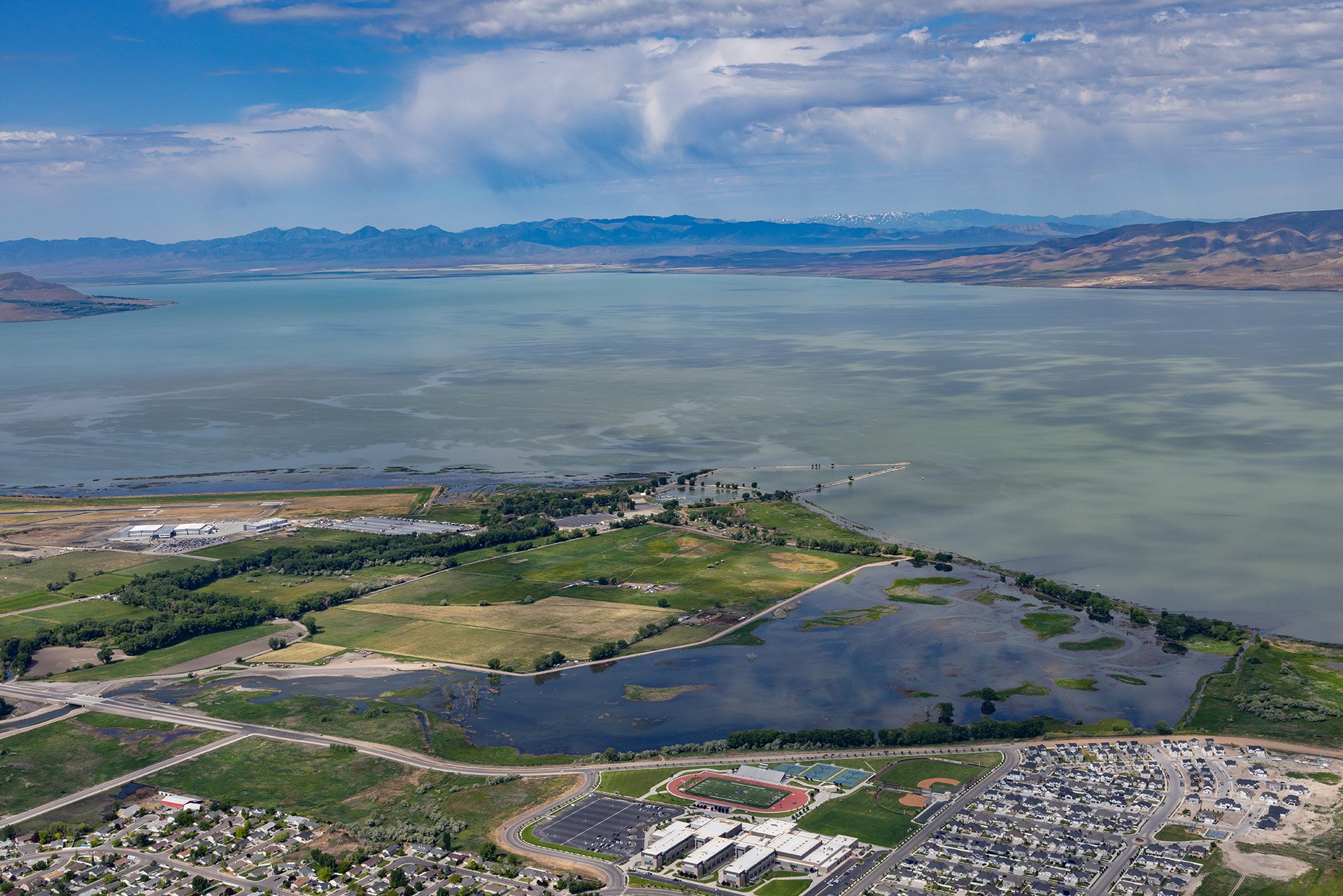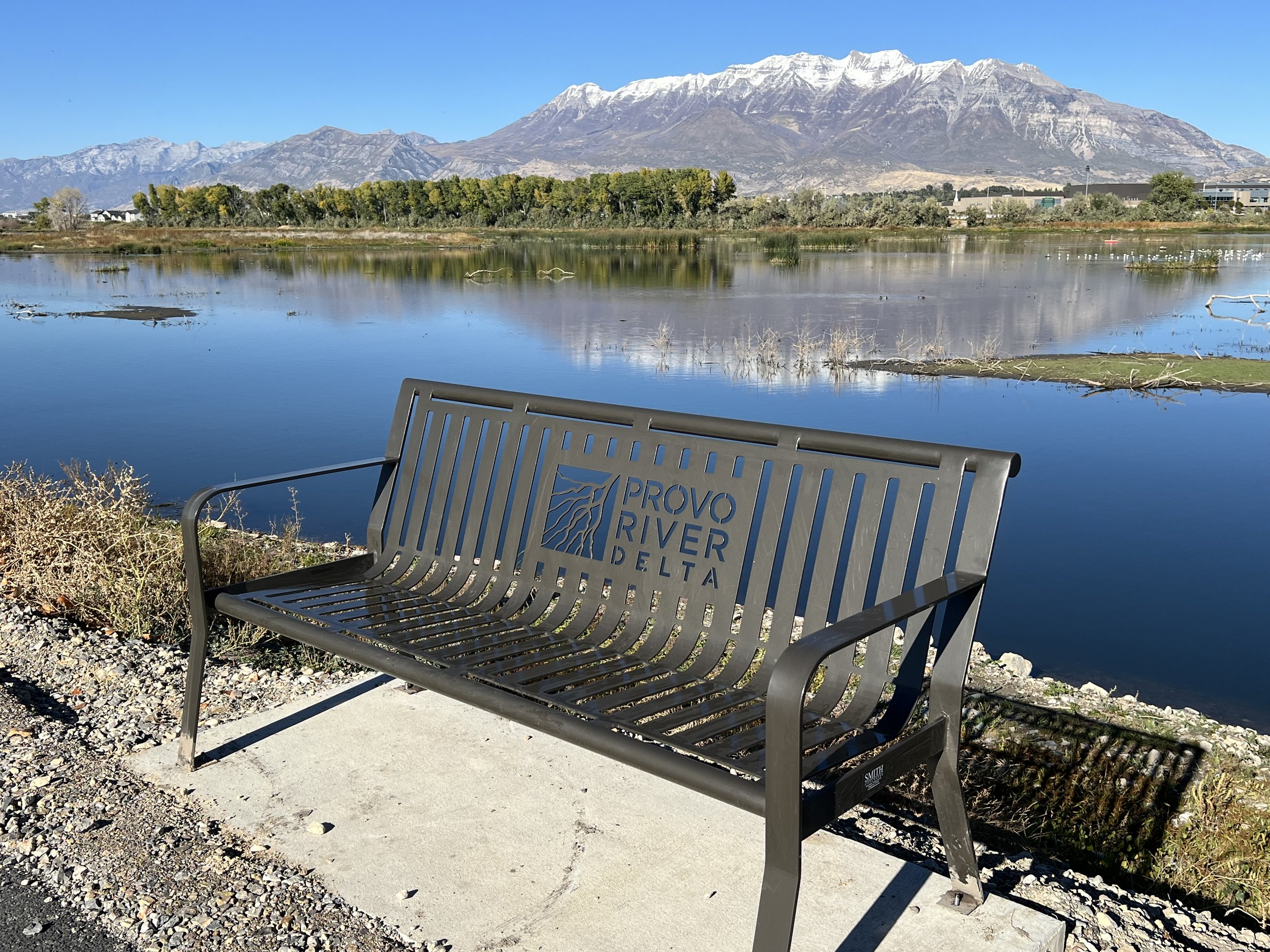The Provo River Delta Restoration Project
Project Features
The purpose of the Provo River Delta Restoration Project is to help recover the threatened June sucker, and in doing so, restore the area’s natural ecosystem. The project will provide and improve recreational experiences in and around the original lower Provo River and the newly restored delta. By building this project, partners in the June Sucker Recovery Implementation Program help ensure important water projects linked to June sucker recovery stay on track. The diversity of habitats and function supported by the delta area will provide the necessary conditions for juvenile June sucker to develop to a size where they can survive in Utah Lake.
The delta project officially broke ground on June 11, 2020 and the next three years were mostly spent excavating a system of braided channels and wetland ponds in 260 acres of acquired agricultural land just north of the original Provo River channel. Major revegetation efforts followed construction each fall, with stewardship activities taking place throughout the year to cultivate and protect plantings.
In 2022, the northern end of Skipper Bay dike - which was initially constructed in the 1940s to hold Utah Lake out of the area - was lowered and four outlet channels were constructed through the lowered dike. This reconnected the lake with historic Skipper Bay, allowing Utah Lake to expand eastward toward its historic shoreline. On March 2, 2023, the Provo River was diverted from a point just downstream of Lakeshore Bridge into the newly constructed delta. The river eventually made its way through the delta and new outlet channels into Utah Lake over the next week.
In the first June sucker spawning event after the river was diverted, a near record number of June suckers migrated through the new delta into the Provo River. Nearly 6,300 tagged June suckers were detected entering the delta, from April 1st through July 12th. Incredibly, because only a small portion of adult June sucker are tagged, the total number that entered the delta is likely 5 to 10 times greater.
The original lower Provo River channel continues to receive a guaranteed portion of Provo River flow through a constructed diversion facility. A small dam being constructed at the channel’s downstream end, near Utah Lake, will maintain water levels to support recreation through this reach. The small downstream dam has been “pre-loaded” with materials to consolidate soft soils and stabilize the structure’s foundation. The structure must be left to settle for up to one year before it can be completed in 2025.
Recreation Facilities
2024 was focused on constructing recreation and access features in the delta and on water management in the original Provo River channel.
Recreation facilities constructed in the delta include educational exhibits, benches, wildlife viewing tower, new trail and new Skipper Bay trailhead with parking, vault restroom and non-motorized boat ramp. The delta opened to public multi-recreational use on October 26, 2024.
Construction of new recreational amenities on the original channel are scheduled for completion in 2025. These include three new fishing platforms and two non-motorized boat ramps - one at Alligator Park, and the other at the trailhead near Utah Lake State Park. The project has also provided funding to Utah County to repave the trail along the channel from Lakeshore Drive to Utah Lake State Park. This paving work will take place in 2025, after the boat ramps and fishing platforms are complete. The existing trail along the original channel will connect to the new Skipper Bay trail through a constructed pedestrian bridge that will create a 3.8 mile loop. In addition, Provo City is constructing the Delta Gateway Park with funding from the project. The park will include a nature focused playground and educational exhibits.








